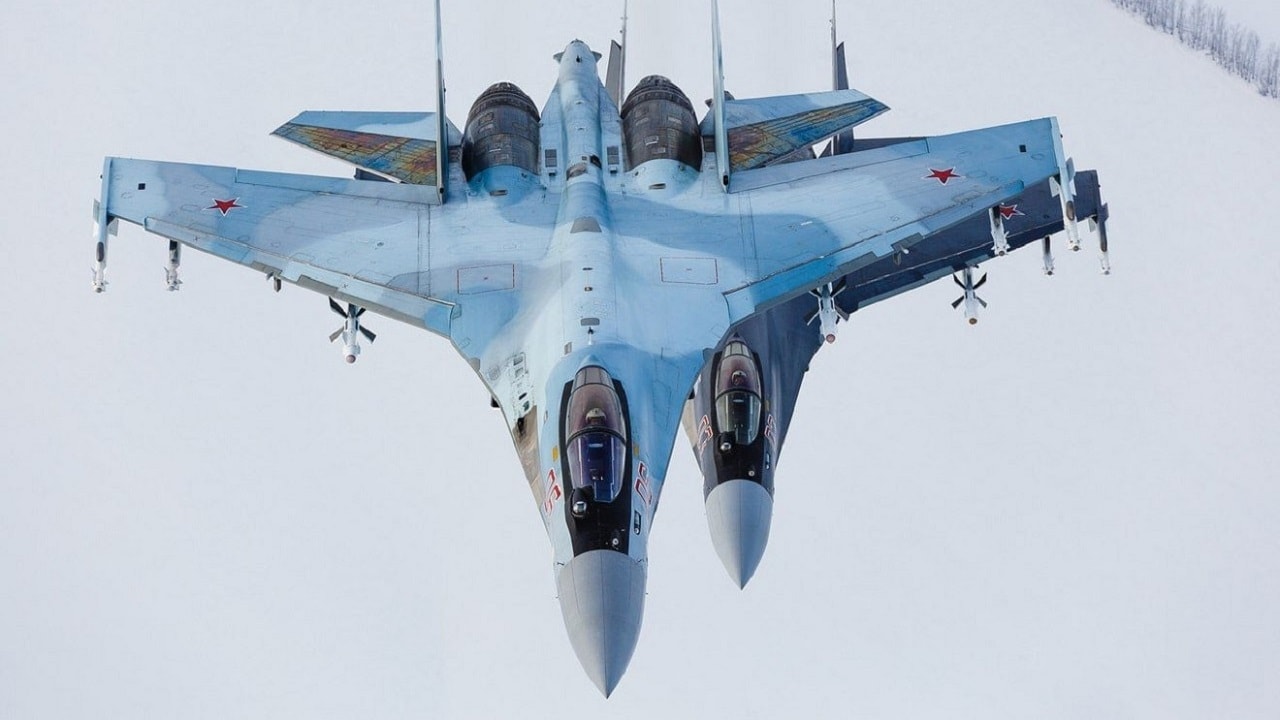Iran’s reported plan to acquire Russia’s Sukhoi Su-35 fighter jet platform is the latest marker of strengthening ties between the two authoritarian states.
Earlier this month, the New York Times reported that an underground Iranian air force base might house a shipment of Russia’s premier fighter airframes.
If it happens, the deal is significant on many levels.
Su-35 contracts with Algeria, Indonesia, and Egypt fell through in recent years due to pressure from U.S. economic sanctions, leaving China as the only military besides Russia to possess the fourth generation-plus platform. An Iranian purchase of the Su-35 would thus push the rogue state even closer to America’s top adversaries.
Further, the Kremlin is probably delivering its fighters as a kind of reimbursement to the Iranian regime for providing Russian forces with the majority of the lethal drones they use in Ukraine. Moscow and Tehran are starting to lean on each other more amid their shared international isolation.
What Is the Su-35?
Designated by NATO as “Flanker-E,” the Su-35 platform is a twin-engine, supermaneuverable airframe that was conceptualized in the early 1980s. Like other Russian fighters, the Su-35 is a modified version of the original Flanker — the Su-27. Moscow often boasts that the enhanced variant combines the best qualities of a modern fighter — supersonic speed, super-maneuverability, and long-range — with qualities such as larger payloads, ability to carry more weapons, and reduced radar signatures that define solid tactical airframes.
One of the Su-35’s most prominent capabilities is its speed. The fighter can fly at approximately 1,500 miles per hour (Mach-2.5), which is the same top speed as the F-22 Raptor and actually faster than the F-35 Lightning II.
The jet also has a flight range of more than 2,000 miles and a service ceiling of around 60,000 feet.
Although the Su-35 boasts some admirable qualities, the jet is lacking in important areas. Russia’s top fighter is the only airframe of its generation to not feature an electronically scanned array radar or sensor fusion. All of the U.S.-made fourth-generation fighters possess these frequency-hopping systems, which are more resistant to jamming. The Su-35 thus has the weakest avionics suite among its counterparts.
Improving Iran’s Aerial Arsenal
Since the current state of Iran’s air forces is dismal at best, an influx of fourth generation-plus fighter jets would be a boon for the regime. Aging airframes like the F-14 Tomcat and F-4 Phantom II comprise some of the best platforms in use by Iranian pilots. While these jets were once top-of-the-line, they would be of little use against the advanced fourth generation-plus and fifth-generation fighters that ply the skies today.
In addition to receiving the Su-35, Iran is hoping Russia will throw in S-400 missile systems. These could make it more difficult for Israel or the U.S. to strike Iran’s nuclear sites, since exiting airframes could be targeted and taken down after launching an attack.
In recent years, Moscow and Tehran have turned to each other to fulfill their military needs, and they have also crafted a budding economic alliance. The news of Iran’s planned purchase of Su-35 fighters will likely be followed by future trade deals between the two rogue states.
MORE: Merkova: Israel Has A Super Tank
MORE: Watch This – Video Shows Ukraine Destroying One Of Russia’s Best ‘Big Guns’
MORE: Video: Watch Ukraine Kill Russia’s Powerhouse T-90M Tank
MORE: The End For Donald Trump Might Finally Have Arrived
Author Expertise and Experience
Maya Carlin is a Senior Editor with 19FortyFive. She is also an analyst with the Center for Security Policy and a former Anna Sobol Levy Fellow at IDC Herzliya in Israel. She has by-lines in many publications, including The National Interest, Jerusalem Post, and Times of Israel.

